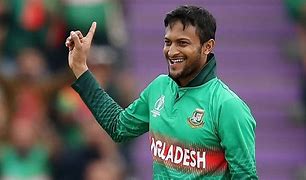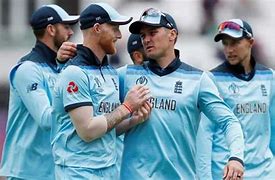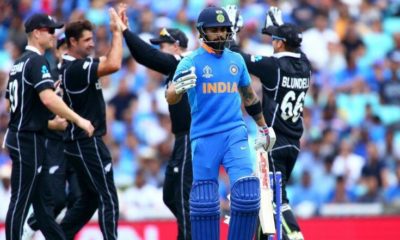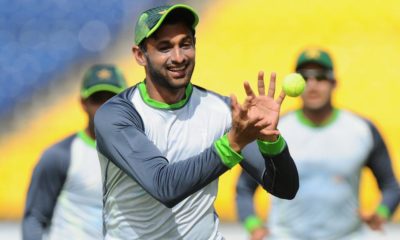Feature
Poor, ‘unrecognised’ blind cricketers do India proud

New Delhi: They are blind, hail from financially weak backgrounds, lack training facilities and are not recognised by the Indian cricket board, but have more than made up for this with their fighting spirit. Their valour and confidence saw India’s visually impaired cricketers emerging champions after beating Pakistan in the quadrennial 40-overs World Cup in South Africa.
This built on their lifting the Twenty-20 World Cup in India in 2012.
“It’s a great feeling that we won the ODI World Cup for the first time. Prior to this, we lost in the finals of the first event in 1998 as well as in the 2006 tournament. So, the victory at the first T20 World Cup gave us a lot of confidence and motivation to do well in this World Cup. That victory also gave us the confidence that we can win big titles,” coach Patrick Rajkumar told IANS.
“For that we took inspiration from Mahendra Singh Dhoni. It was on the back of our minds that he did that and we can also do it. But it’s also a matter of coincidence,” he added.
And the victory couldn’t have been more memorable and sweeter as it came against arch-rivals Pakistan. Though the coach ruled out the rivalry part, he takes sheer joy in beating a strong team.
“More than the rivalry, it was great that we defeated the two-time defending champions. They are a great team. But we defeated them in the T20 World Cup final and we had the belief that we can overcome the challenges in this final as well,” Rajkumar said.
Holders Pakistan had set India a daunting task of chasing 390 runs and, after some initial hiccups, the Indian batsmen chased down the huge total with two balls and five wickets to spare.
Ajay Reddy and Prakasha Jayaramaiah shared an unbeaten 133-run partnership for the sixth wicket to change the course of the match that looked like going towards Pakistan till then.
“It was a tough match. We conceded 40 runs extra than expected. Pakistan posted a huge total. It forced us to change our batting order. Prakasha and Ajay are the experienced and basically they are top order batsmen. Because of the big target, we told them to play down and the decision worked for us,” Rajkumar said.
The blind team has players of three categories – B1, B2 and B3. While the players belonging to the first category are completely visually impaired, the players belonging to the second and third categories can see up to six and nine metres. (A cricket pitch is a little over 20 metres long.)
Rajkumar and his boys have the same amount of hunger and passion to do well in the sport for the country. But their lives are completely different to the adulation and financial security enjoyed by the likes of Dhoni, Virat Kohli or Suresh Raina.
“First of all, we don’t get good grounds to train. The Board of Control of Cricket in India (BCCI) is yet to recognise us. So, we don’t get to train in their good facilities. This time, we trained at the Barabati Stadium in Cuttack,” he said.
“Most of the players come from financially-weak families. So, that is a genuine struggle. And when they play for the national team, they don’t get anything out of it. They get to live in ordinary hotels. The team travels in unreserved (train) compartments.”
Rajkumar also said that he couldn’t concentrate on the development of individual players as he doesn’t have support staff.
Skipper Shekar Naik however said that the sheer joy of representing the country helps them forget these problems.
“We don’t think that we have any weaknesses. The joy of representing the country drives us forward. Once we get on the field, we don’t think about these problems,” Naik told IANS.
“The BCCI doesn’t recongnise us. Also, players don’t have jobs to support their families. I earn Rs 12,000 per month in a city like Bengaluru. So, after this triumph, I am hopeful that we will get good jobs so that our lives can be better and we can bring more glory for our nation.”
Entertainment
Meghalaya Reserves Legalized Gambling and Sports Betting for Tourists

The State Scores Extra High on Gaming-Friendly Industry Index
Meghalaya scored 92.85 out of 100 possible points in a Gaming Industry Index and proved to be India’s most gaming-friendly state following its recent profound legislation changes over the field allowing land-based and online gaming, including games of chance, under a licensing regime.
The index by the UK India Business Council (UKIBC) uses a scale of 0 to 100 to measure the level of legalisation on gambling and betting achieved by a state based on the scores over a set of seven different games – lottery, horse racing, betting on sports, poker, rummy, casino and fantasy sports
Starting from February last year, Meghalaya became the third state in India’s northeast to legalise gambling and betting after Sikkim and Nagaland. After consultations with the UKIBC, the state proceeded with the adoption of the Meghalaya Regulation of Gaming Act, 2021 and the nullification of the Meghalaya Prevention of Gambling Act, 1970. Subsequently in December, the Meghalaya Regulation of Gaming Rules, 2021 were notified and came into force.
All for the Tourists
The move to legalise and license various forms of offline and online betting and gambling in Meghalaya is aimed at boosting tourism and creating jobs, and altogether raising taxation revenues for the northeastern state. At the same time, the opportunities to bet and gamble legally will be reserved only for tourists and visitors.
“We came out with a Gaming Act and subsequently framed the Regulation of Gaming Rules, 2021. The government will accordingly issue licenses to operate games of skill and chance, both online and offline,” said James P. K. Sangma, Meghalaya State Law and Taxation Minister speaking in the capital city of Shillong. “But the legalized gambling and gaming will only be for tourists and not residents of Meghalaya,” he continued.
To be allowed to play, tourists and people visiting the state for work or business purposes will have to prove their non-resident status by presenting appropriate documents, in a process similar to a bank KYC (Know Your Customer) procedure.
Meghalaya Reaches Out to a Vast Market
With 140 millions of people in India estimated to bet regularly on sports, and a total of 370 million desi bettors around prominent sporting events, as per data from one of the latest reports by Esse N Videri, Meghalaya is set to reach out and take a piece of a vast market.
Estimates on the financial value of India’s sports betting market, combined across all types of offline channels and online sports and cricket predictions and betting platforms, speak about amounts between $130 and $150 billion (roughly between ₹9.7 and ₹11.5 lakh crore).
Andhra Pradesh, Telangana and Delhi are shown to deliver the highest number of bettors and Meghalaya can count on substantial tourists flow from their betting circles. The sports betting communities of Karnataka, Maharashtra, Uttar Pradesh and Haryana are also not to be underestimated.
Among the sports, cricket is most popular, registering 68 percent of the total bet count analyzed by Esse N Videri. Football takes second position with 11 percent of the bets, followed by betting on FIFA at 7 percent and on eCricket at 5 percent. The last position in the Top 5 of popular sports for betting in India is taken by tennis with 3 percent of the bet count.
Local Citizens will Still have Their Teer Betting
Meghalaya residents will still be permitted to participate in teer betting over arrow-shooting results. Teer is a traditional method of gambling, somewhat similar to a lottery draw, and held under the rules of the Meghalaya Regulation of the Game of Arrow Shooting and the Sale of Teer Tickets Act, 2018.
Teer includes bettors wagering on the number of arrows that reach the target which is placed about 50 meters away from a team of 20 archers positioned in a semicircle.
The archers shoot volleys of arrows at the target for ten minutes, and players place their bets choosing a number between 0 and 99 trying to guess the last two digits of the number of arrows that successfully pierce the target.
If, for example, the number of hits is 256, anyone who has bet on 56 wins an amount eight times bigger than their wager.























